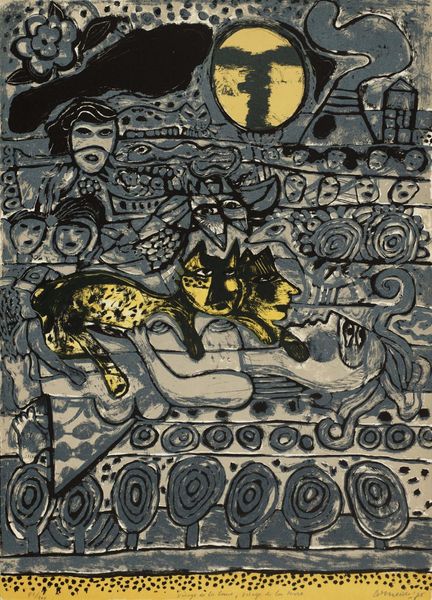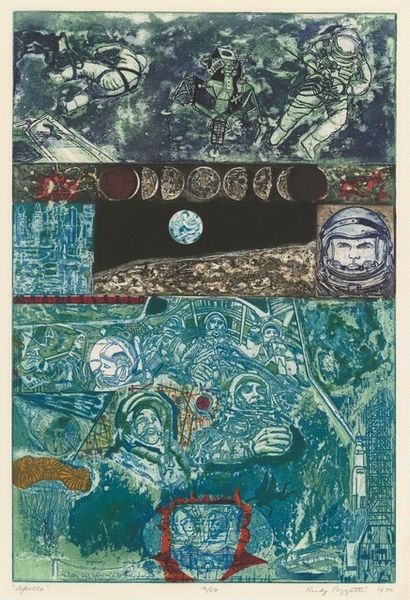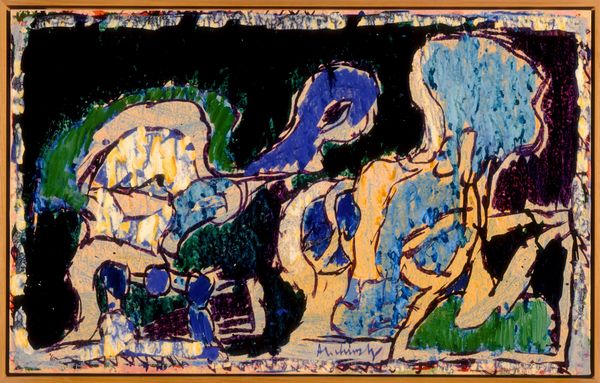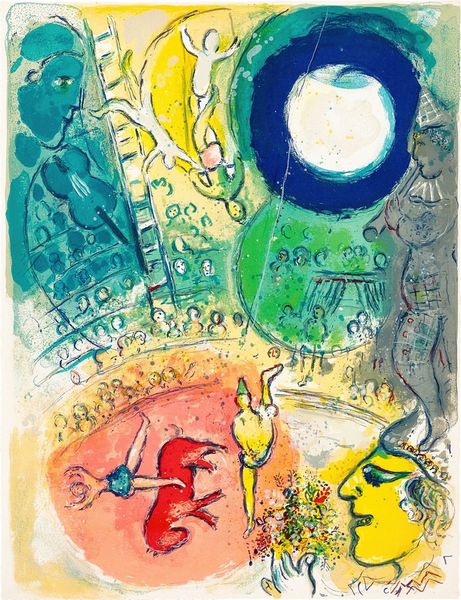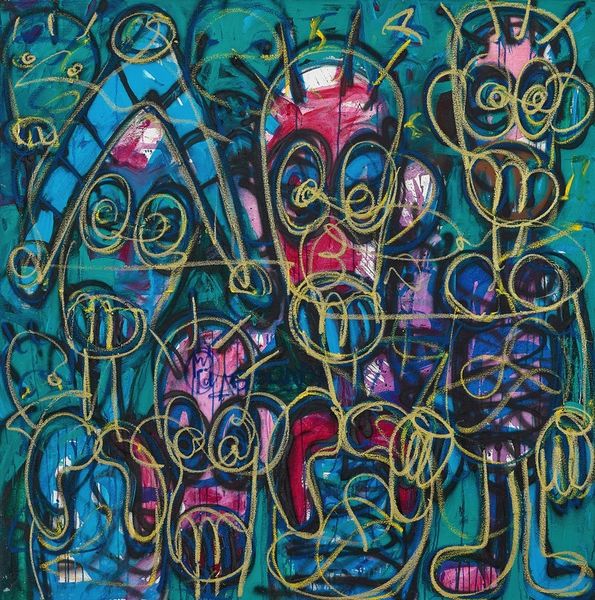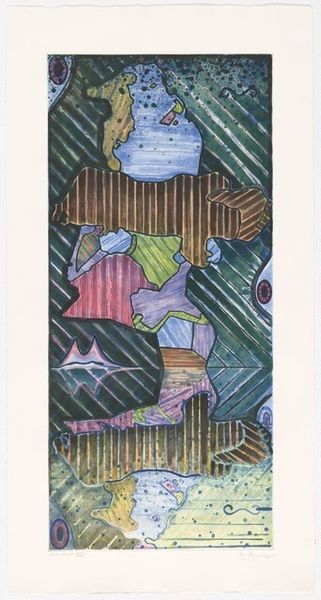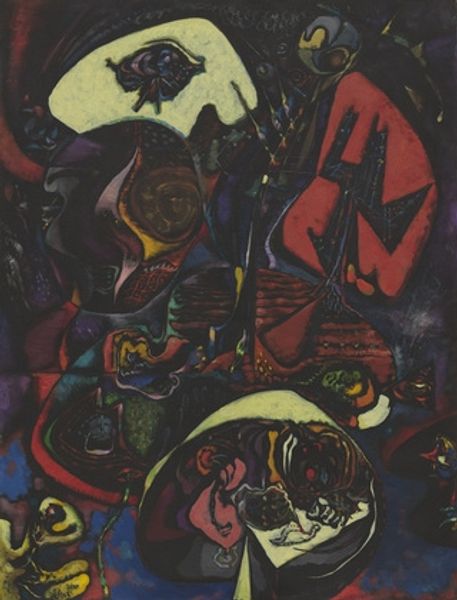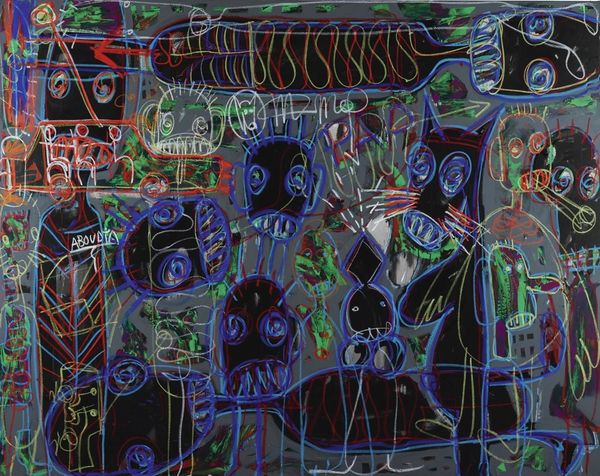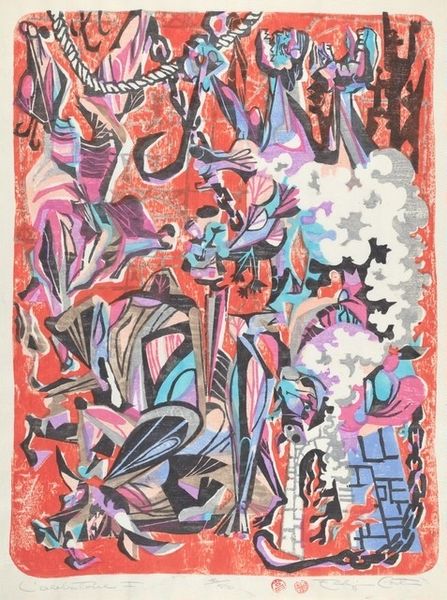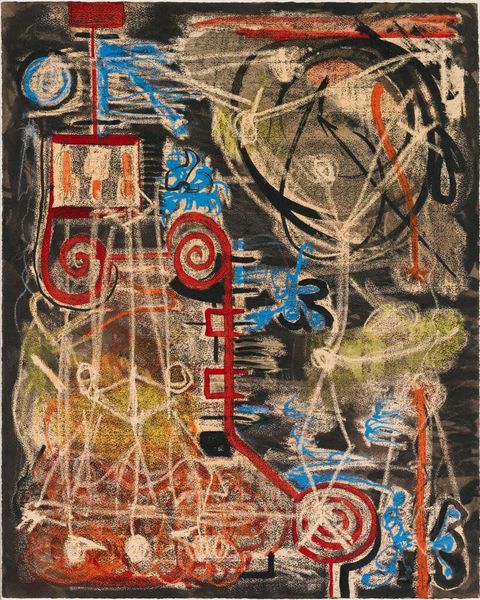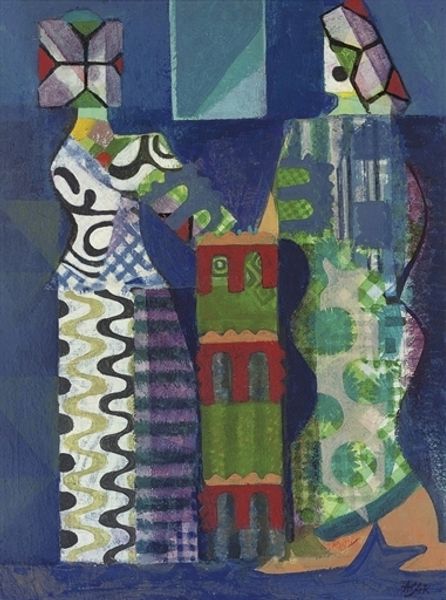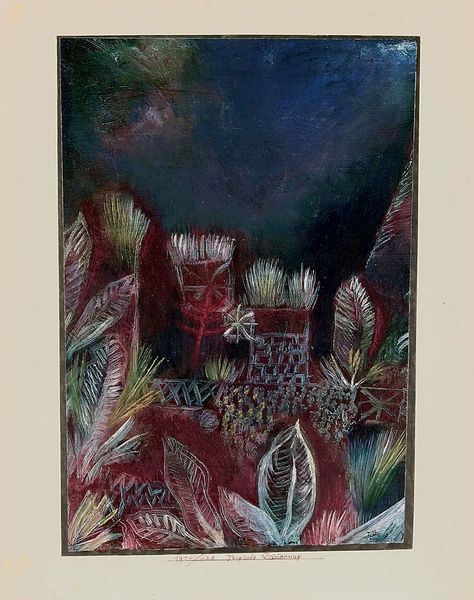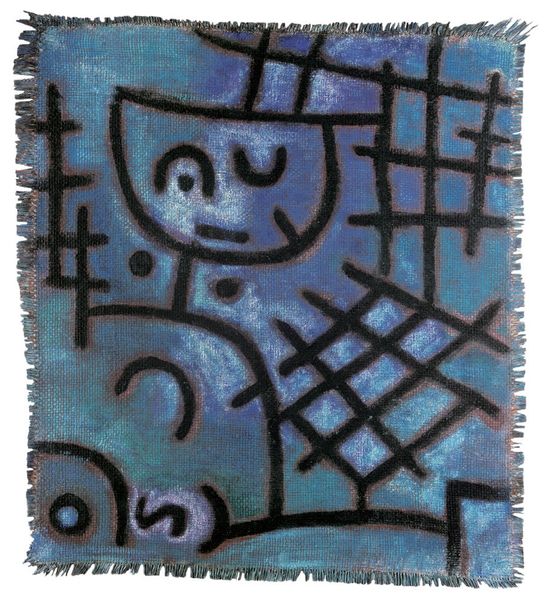
Dimensions: support: 1159 x 810 mm
Copyright: © ARS, NY and DACS, London 2014 | CC-BY-NC-ND 4.0 DEED, Photo: Tate
Curator: William N. Copley's "Place de l’Opéra," in oil paint, presents a somewhat distorted view. What strikes you most about it? Editor: I am drawn to how dreamlike the image is. The setting seems so luxurious, yet the vehicle in the foreground looks almost broken. What do you see in this piece? Curator: This work critiques the societal gaze on luxury and the power dynamics inherent in such displays. The opera house is an architectural marvel, yet Copley juxtaposes it with the absurd, almost clownish depiction of a car, perhaps highlighting the performative nature of wealth. How does that juxtaposition make you feel? Editor: I feel there's a tension there, a challenge to the conventional admiration of high society. It makes me question who benefits from these spectacles. Curator: Precisely. By playfully dismantling the icons of wealth, Copley invites us to reconsider the values we often take for granted. It is a call for a more equitable distribution of beauty, access, and resources. Editor: I never thought about it this way. Now I see how Copley’s distortions really emphasize the social commentary within the work.
Comments
Join the conversation
Join millions of artists and users on Artera today and experience the ultimate creative platform.
tate 6 months ago
⋮
Place de L’Opera is an oil painting on canvas by the American artist William N. Copley. A blue car with twisted chassis, front axel and chrome bumper dominates the picture. Two golden yellow headlights glow above the bumper. The car’s number plate shows the letters CPLY and a cranking handle droops down onto the square paving below. Inside the car a lilac umbrella rests on the parcel shelf while two small figures, recognisable as opera singers from their clothing and gestures, perform in the rear window. The car, which appears to have crashed into and driven over a red and white ‘No Entry’ sign, is at a standstill. Behind it is a decorative dark green lamppost that supports three round white bulbs, and beyond this appears an ornate blue building, the warm glow of interior lighting seeping out through a series of small windows on its façade. A continuous midnight blue night sky forms the background to the building, accentuating its intricacies. The picture is painted in an almost cartoon-like fashion, with objects, or parts of objects, clearly delineated with thick lines and swathes of paint.
